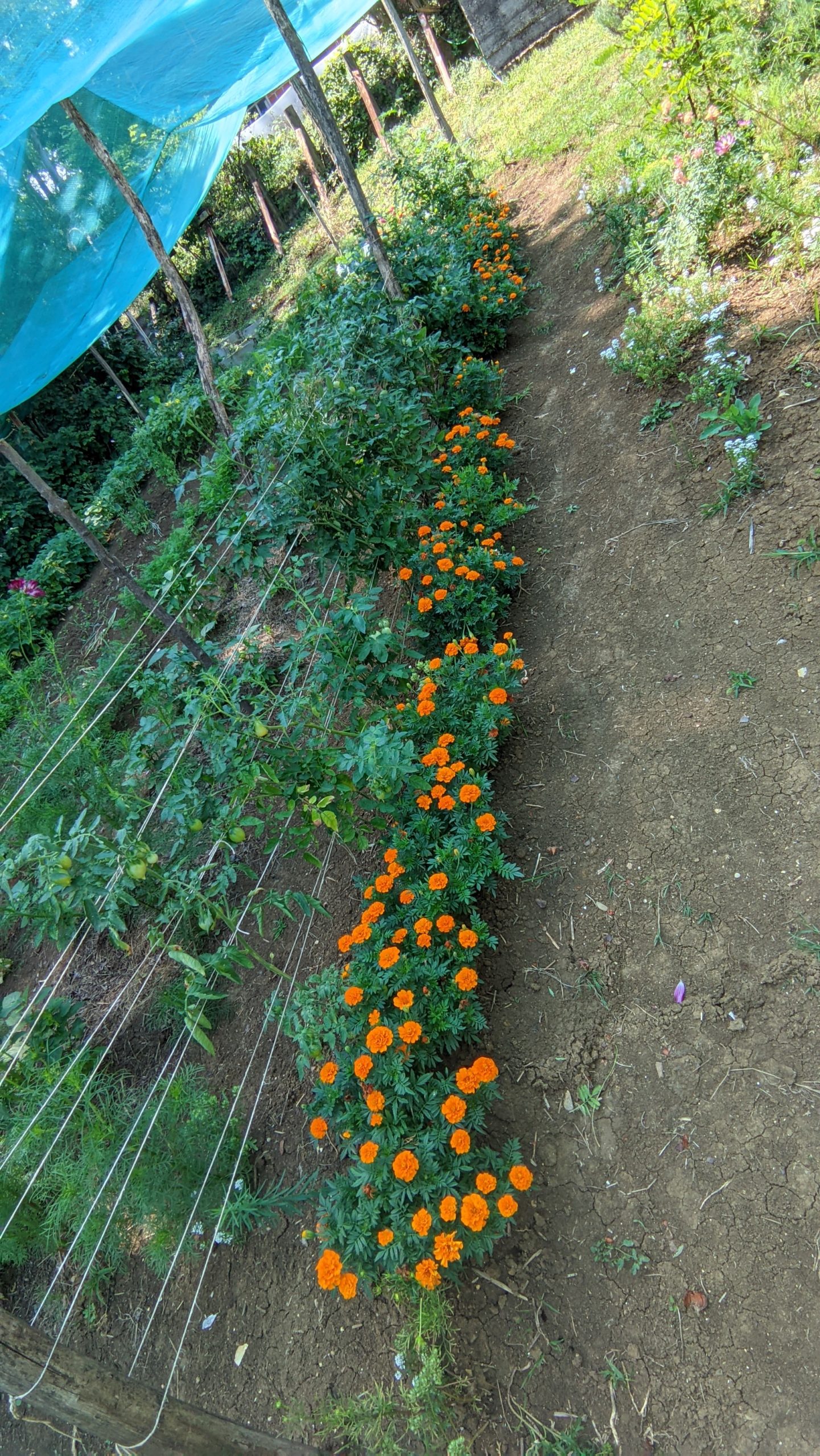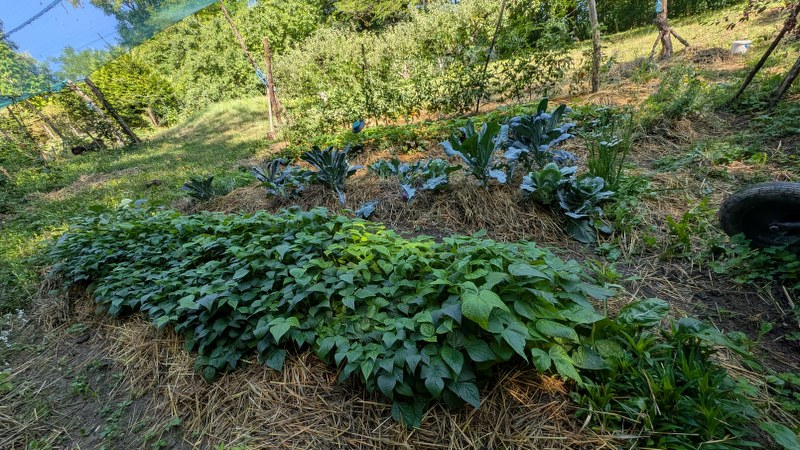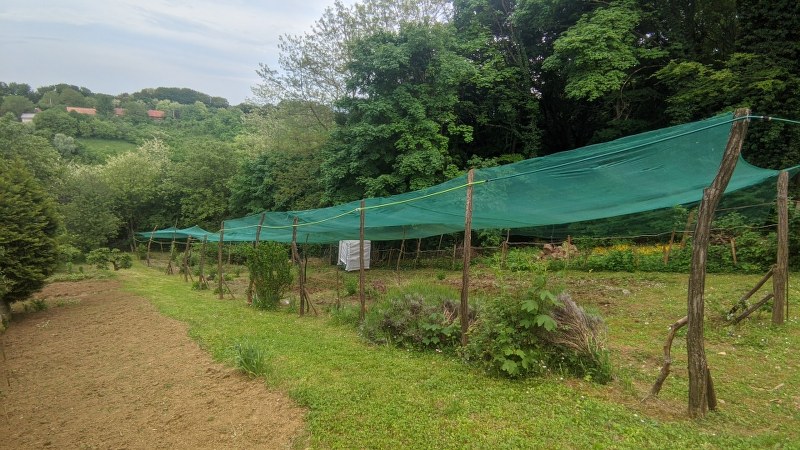Watering the plants is one of the essential chores in the garden during a heatwave. But when is the right time to water our plants? Can we do it whenever we want? Or will the watering affect our gardening results?
Summer watering
During the summer, especially during the heatwave, our vegetables are in desperate need of water. Usually, hot and sunny weather also brings drought, so the amount of water available is too low for normal plant growth. Plants with deep roots, such as big shrubs, roses, older fruits, and trees can find more water in deeper layers of soil. Plants with short roots will struggle after just a couple of stainless days.
My garden has been hit by a bad drought for over 10 months. We’re getting periodical rain episodes, but the amount is minor and well below average. The soil is very dry and the vegetable garden wouldn’t survive without water. Especially since our temperatures have been over 35°C(95°F). This is why I water the garden very often and a lot.
Is morning watering the best?
When we read about watering almost every article states that morning watering is the best time to water the garden. But is this the case? Does the same rule apply during the heatwave?
The answer is yes and no. Yes, morning watering is better than afternoon watering. Especially in a milder climate. But, in a very hot climate, and during the heatwaves, the morning watering is almost the same as watering in the middle of the day. Summer mornings can be extremely hot, especially during the end of July and the beginning of August. The temperature itself isn’t a problem if it’s not combined with sunshine.
Gardens located in the full morning sun are overheated in the early hours of the morning. Watering in the morning will increase the moisture and turn our plants’ environment into jungle conditions. In high temperatures, evaporation, and sun, the plants will be prone to diseases such as blight and mildew. The plants will be exposed to sunburns on the leaves, and there can even be damaged roots due to the combination of water and burning sun.
Another problem with watering in the morning is that the intense sun will dry the soil very quickly. By noon the soil will be completely dry, leaving our plants in drought until the next morning, which for some delicate plants can be deadly.
My garden is located in the northeast and exposed to the sun from the early hours of the morning. I’m able to get to the garden around 5:30 am and 30 minutes later the garden is already exposed to the sun. I’m not even halfway finished with watering when the sun is already very strong. There have been many occasions when I got sunburns working in the garden and I’m never in the garden after 9 am.

Evening watering
In gardens that are exposed to the early morning sun, evening watering could be a better choice than morning watering. Watering after the sunset will give the plants the necessary time to absorb the water slowly, it will cool down the overheated soil and give the plants a break from the intense heat. The plants will spend 8-10hours with moist soil, but without the danger of sunburns or increased disease danger.
Evening watering should be done after the sun leaves the garden, which depending on the location can be when the sun sets or when the forest or building shade covers the whole garden. When watering in the evening water should be warm, but if there is no way to store some water plants can be watered with the water hose. Only in this case, the watering should be done directly to the root and leaves shouldn’t be showered.

Morning and evening watering – when to water which plants
Sometimes we can’t avoid water in the morning. Especially when the garden is too big to be watered at once. In this case, some vegetables can be watered in the morning without any danger. They don’t care about the moisture or the increased heat. Beans, carrots, beets, parsnip, onions, and chard can be watered at any time. Most of these plants won’t mind the direct morning sunlight or the increased moisture during the morning hours. Most of them grow fruits under the soil and fruits won’t be exposed to direct sunlight.
Fruit-bearing vegetables such as cucumbers, zucchinis, peppers, tomatoes, and eggplants will prefer late evening watering. This way they will have time to absorb the water during the night and the soil will be drier on the surface when the morning sun hits.
My garden is too big to be watered all at once, so I use this way to water the plants. I have a 250l/66gal barrel in the garden which I fill up in the evening and use to water the plants that don’t mind morning watering. Then I fill the barrel again in the morning and use the water to water the fruit-bearing vegetables in the evening. This way I have avoided the disease problems and the vegetable production this year is great. Although we had 54 days with temperatures above 30°C/86°F since June 1st, my garden is looking very well and I have been harvesting twice a week.

Tips on watering a sloping garden
Watering a sloping garden is an even bigger issue since most of the water will drain down the hill. The soil dries even faster and carrying watering cans is a very difficult task. The easiest way to water the sloping garden would be to have a drop-by-drop watering system, but this can be very expensive. Especially if there’s no pond or water well present in the garden. But there are ways to help ourselves to ease the watering of the sloping garden.
Mulching and dense planting
Mulching will help the plants retain water and we won’t need to water as much as we would without the mulch. When watering mulch on the sloping garden the water stream should be slow and steady since stronger water could wash the mulch down the garden. Soaking the mulch will keep the beds during the whole day. Still, we should be careful with delicate plants. Too much moisture could kill them.

Dense planting is something I do in my garden for many reasons and watering is one of the main reasons. Dense planting will help the foliage make a small cover above the roots and the soil will stay moist longer allowing the plants to absorb more water. Densely planted vegetables can be watered with a shower head while individual plants will benefit more from watering without a head

Making water holes
Another way to retain water is by making holes and rows around the plants. The holes and rows don’t need to be big or deep, just enough for the water to stay in one spot until it absorbs. The slope will take away the water, and making a row or hole close to your vegetable will keep it from flowing down the hill.

Water pots
Another great way to stop the water is to stick old seedling pots next to a plant and fill them with water. This way the water will slowly absorb into the water and the plant will be well watered. The downside to this kind of watering is the needed space. Every pot will take space from the bed and you’ll be able to fit fewer plants on it.
Direction of watering
The sloping garden should be watered from the bottom to the top. When watering from top to bottom, the water flows down the dry soil, which during the heatwave acts like a concrete slab, and drains the water further down the bed. When watering from the bottom, we start by watering and softening the soil on the bottom and continue our way up. The water from the upper parts of the bed will flow down slower and it will soak the soil better.
With proper ways and time of watering, we will avoid drought problems, diseases, and a decrease in fruit production.





Leave a Reply